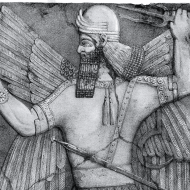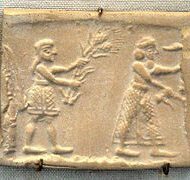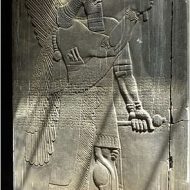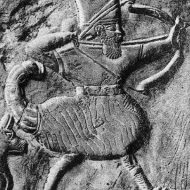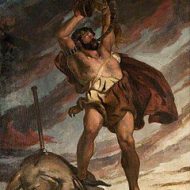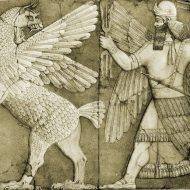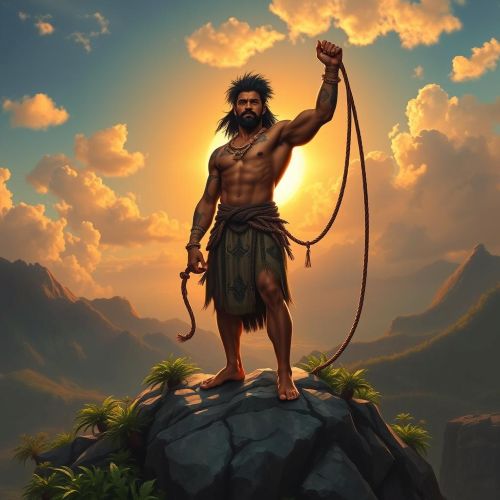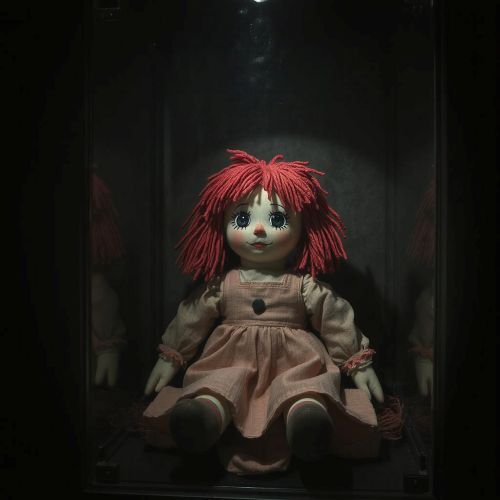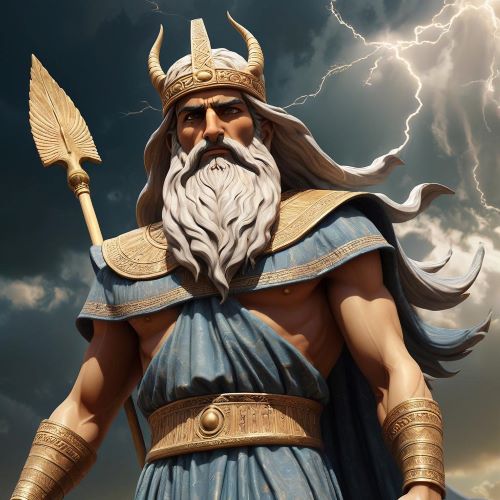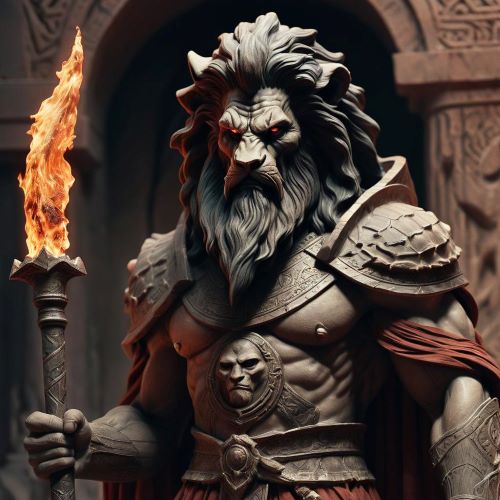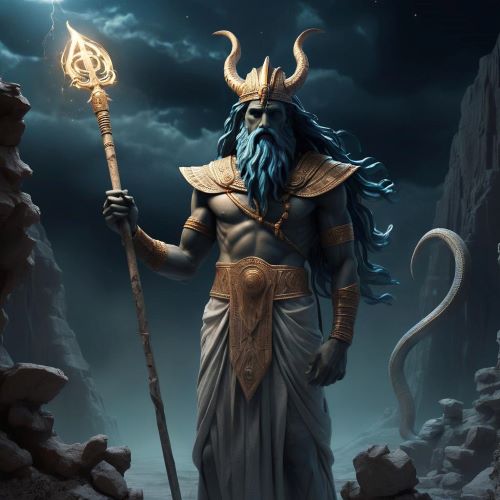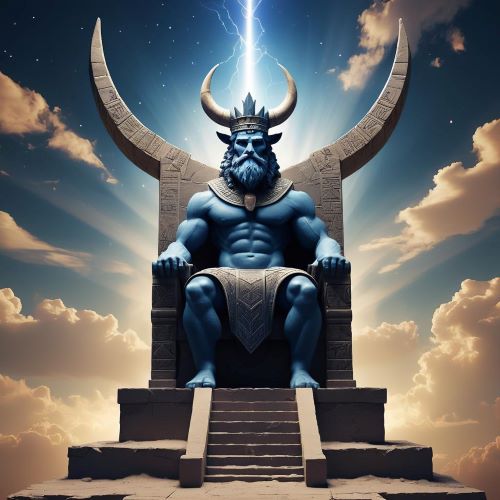Ninurta : God of Agriculture
Listen
At a glance
| Description | |
|---|---|
| Origin | Sumerian Mythology |
| Classification | Gods |
| Family Members | Enlil (Father), Ninhursag, Ninlil (Mother), Gula (Wife), Nergal, Inanna, Ninanna, Enbilulu (Siblings) |
| Region | Iraq |
| Associated With | War, Agriculture |
Ninurta
Introduction
Ninurta is a Sumerian god who is associated with hunting, war, law, and farming. In the earliest records, he is regarded as a healer who can cure humans of their sickness. As the situation in Mesopotamia grew more militarized, Ninurta became a warrior deity. Although he had previously been associated with agriculture, he retained many of his earlier traits. It’s believed that Ninurta was the inspiration for the mythological figure of Nimrod, who is mentioned in the Book of Genesis as a powerful hunter.
In the Second Book of Kings, he is mentioned under the name Nisroch. During the 19th century, Assyrian stone reliefs depicting winged and eagle-headed figures from the Ninurta temple at Kalhu were commonly referred to as Nisrochs, but they actually appeared in works of fantasy literature.
In Sumerian mythology, Ninurta’s greatest achievement is defeating Asag, the cruel monster created by An and given birth to by Earth in an attempt to take his throne. He not only kills Asag, but he also helps build the foundations of agriculture, which is the life-giving activity of the land.
Physical Traits
He is often depicted as a warrior, with upraised wings and a bow and arrow. In Babylonian art, he is also said to have run on the back of a lion-tailed creature. Ninurta is known for carrying a mace called Sharur, which is capable of providing reasoning and speech.
Family
Ninurta was the son of Enlil and Ninhursag, but in some stories, Enlil and Ninlil. His wife was Gula, the goddess of healing although in earlier inscriptions, as Ningirsu, he was married to the goddess Bau who was also known as Baba. Bau was also regarded as the wife of Zababa, and she was worshipped in Lagash. She and Ninurta were said to have two sons, Sul-Sagana and Ig-alima. They had seven daughters, but Ninurta was never claimed to be their father. As Enlil’s son, he had siblings Nergal, Enbilulu, Ninanna, Ninazu, and sometimes Inanna.
Other Names
Ninurta is also known as Ningirsu, Pabilsag, and the biblical Nimrod depending on the area they are being worshipped in.
Powers and Abilities
In the 2nd millennium BCE, when he was featured in Babylonian literature, he was regarded as a war god. His name was changed to Ninurta during the 1st millennium BCE. Despite being regarded as a great warrior-god, Ninurta was still associated with agriculture.
Ninurta’s fame can be attested to in the Bible, where he is regarded as Nimrod, who is described as a mighty hunter. Despite his various achievements, he is still associated with agriculture and harvest. He was also depicted as a flawed individual who was capable of great deeds.
The power and position of Ninurta in the Pantheon of Mesopotamia would have greatly contributed to any document that was attributed to him. He would have also had to take time away from his heroic activities to advise the people of agriculture.
Modern Day Influence
In 2016, the Islamic State of Iraq & the Levant (ISIL) destroyed Ashurnasirpal I’s ziggurat at the town of Kalahu. This act was part of ISIL’s strategy of razing ancient ruins that it deemed were in conflict with its interpretation of Islam. According to an ASOR statement, the group might have destroyed the temple to use it as a propaganda tool. The organization claimed that this act could have also been carried out to demoralize the locals. What it did accomplish was destroy hundreds of records of ancient history that were being studied to shed more light on the glorious past of the region.
In 2020, archaeologists discovered a 5,000-year-old temple dedicated to Ninirsu at the Girsu site. The remains of various objects, such as bowls, cups, animal bones, and ritual processions, were found in the area. One of the most interesting pieces was a bronze figurine that was made from the bark of a duck. It is believed that the figurine was made to resemble Nanshe.
Related Images
Frequently Asked Questions
What is Ninurta the god of?
Ninurta was an ancient Mesopotamian god who was associated with farming, healing, hunting, law, scribes, and war. He was originally the Sumerian god of springtime thunder and rainstorms and of the plow and plowing and was later a deity of war. He was regarded as the son of the chief god Enlil and his main cult center in Sumer was the Eshumesha temple in Nippur.
What are the powers of Ninurta?
Ninurta had various powers depending on his role and context. As a god of agriculture, he had the power to cure humans of sicknesses and release them from the power of demons He also had the power to provide agricultural advice to farmers and to make the world useful for mankind by using stones to build the Tigris and Euphrates rivers. As a god of war, he had the power to slay the forces of chaos with his weapons, such as his talking mace Sharur and his thunderbolts.
What is Ninurta's weapon?
Ninurta’s weapon was a talking mace called Sharur, which means “smasher of thousands”. Sharur had the power to fly across vast distances without impediment and communicate with its wielder. It could also take the form of a winged lion. Sharur was also associated with the stinger of the Scorpion constellation. Sharur was described as having seven or fifty heads and was sometimes depicted as a fire-spitting winged storm beast.
Who is Ninurta in Gilgamesh?
Ninurta is a god who appears in the Epic of Gilgamesh as a god of war, chaos, and silence. He is one of the gods who approves of the flood that wipes out humanity, except for Utnapishtim and his family. He is also one of the gods who grants immortality to Utnapishtim after he survives the flood. In some versions of the epic, he is also the god who destroys the stone things that Gilgamesh brings back from his journey to Utnapishtim.

